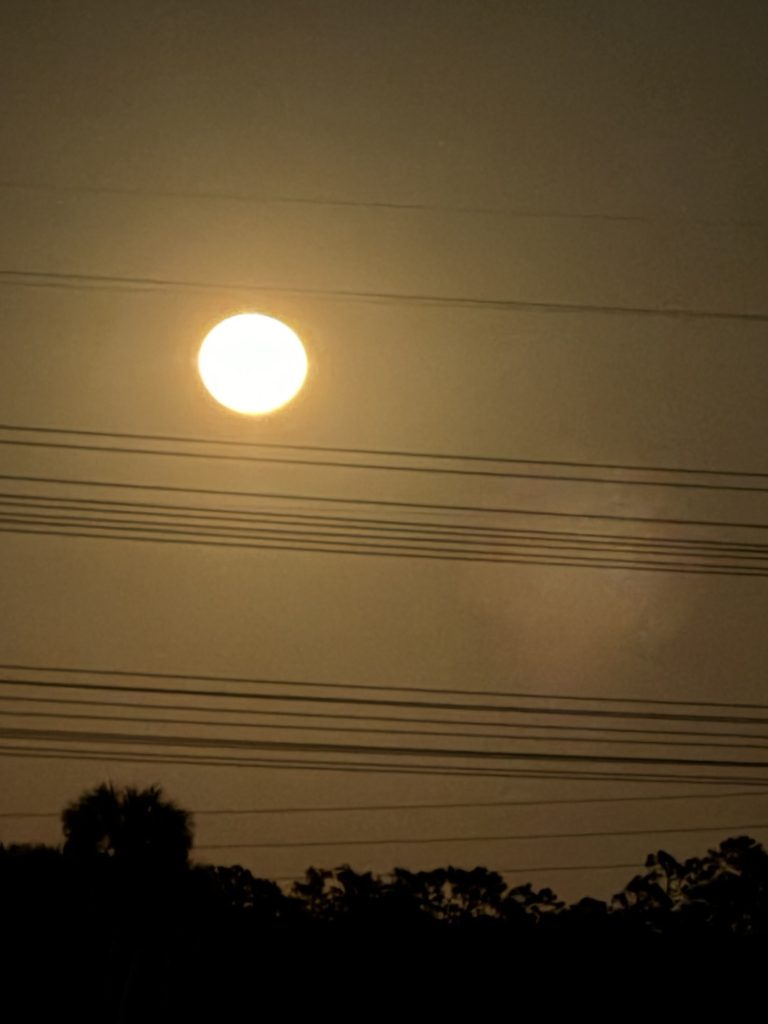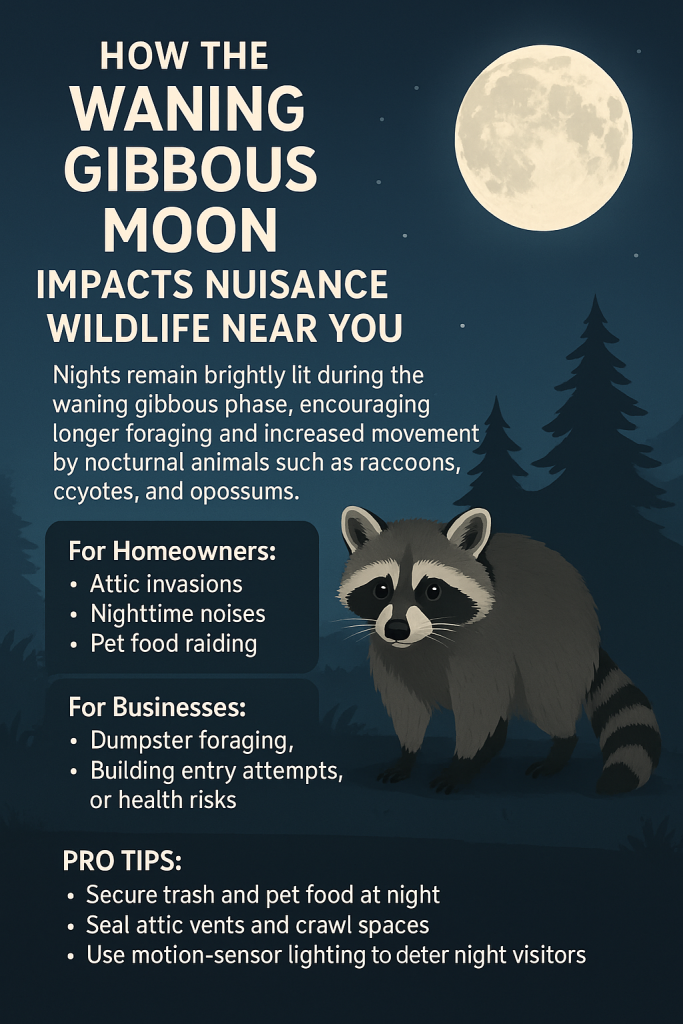How the Waning Gibbous Moon Phase Influences Nuisance Wildlife Behavior and Human-Wildlife Conflicts

As a wildlife biologist with decades of field experience, I’ve spent countless nights observing animal behavior under various environmental conditions. One often overlooked but incredibly influential factor is the moon phase. Right now, we are in the waning gibbous phase—a period that plays a subtle yet significant role in the activity patterns of many nuisance wildlife species. Understanding how this particular moon phase impacts animal movement helps homeowners and commercial property managers take proactive measures in wildlife conflict prevention and resolution.
The Biology of Moonlight: Why It Matters
Wildlife, particularly nocturnal and crepuscular species, rely heavily on light levels to guide their behaviors. The moon serves as a critical natural light source, influencing foraging, mating, predation risk, and territorial movement. Animals have evolved over millennia to synchronize their internal biological clocks (circadian rhythms) with lunar cycles, adapting their behaviors accordingly.
The waning gibbous phase occurs just after the full moon. During this time, the moon is still quite bright but gradually diminishing in illumination each night. This means several key things for wildlife:
High nocturnal visibility: The nights remain fairly illuminated, giving both predators and prey extended activity windows. Altered predator-prey dynamics: Prey species tend to become more cautious and reduce movement during high moonlight to avoid being seen. Predator advantage: Predators with keen vision, such as owls, coyotes, and bobcats, use the bright conditions to hunt more efficiently.
These subtle shifts create ripple effects across the food chain, including the human-wildlife interface where conflicts arise.
Wildlife Trends During the Waning Gibbous Phase
Several nuisance species exhibit increased or altered activity during the waning gibbous phase. Let’s look at some of the common culprits:
1. Raccoons
Raccoons are notorious for raiding garbage bins, nesting in attics, and invading crawl spaces. During the waning gibbous phase, they capitalize on the still-bright nights to extend their foraging range. Their nocturnal nature and sharp night vision make them more confident under moonlight, especially when food sources are abundant in suburban or urban areas.
2. Coyotes
In both rural and increasingly urban environments, coyotes adjust their movement patterns based on moonlight. During the waning gibbous, they may travel longer distances, often venturing into human-occupied areas in search of food—especially if other conditions like drought or seasonal food shortages are present.
3. Opossums and Skunks
These omnivorous mammals also make the most of moonlit nights. While they tend to be more reclusive, the extended twilight allows for safer foraging in residential areas. This leads to increased roadside activity and encounters near homes, especially in areas with pet food left outside or unsecured trash.
4. Rodents
While smaller rodents like rats and mice often avoid bright conditions to escape predation, roof rats and Norway rats may take calculated risks under the waning gibbous if they detect consistent food sources or nesting opportunities—like an unsealed attic vent or food waste in commercial dumpsters.
Seasonal Interactions with the Moon Phase
The effect of a waning gibbous moon phase is amplified or subdued depending on the season. In spring and fall—prime times for breeding and migration—many species are more active overall. When the waning gibbous aligns with:
Spring (March-May): You’ll see heightened movement due to breeding instincts and parental care behavior. Raccoons, for example, may become more daring as they gather food for young kits. Fall (September-November): Animals prepare for winter, leading to increased food caching and nest seeking. A well-lit night gives them a longer window to prepare, often intersecting with human habitats.
Implications for Homeowners and Commercial Properties
When wildlife behavior changes, so does the risk of conflict with humans. The waning gibbous phase, while beautiful to observe, comes with unique challenges:

For Homeowners:
Increased attic and crawl space invasions: Raccoons and squirrels may take advantage of longer nights to search for denning sites. Pet and garbage raiding: Leaving pet food or unsecured trash outside becomes an open invitation for raccoons, opossums, or even coyotes. Noise complaints: Increased nocturnal activity may lead to scratching, thumping, or vocalizations heard in the walls or roof.
For Commercial Properties:
Dumpster foraging: Restaurants, warehouses, and businesses with food waste are prime targets during moonlit nights. Structural damage: Rodents and raccoons may exploit weaknesses in siding or roofing to access shelter. Liability risks: Wildlife presence increases the potential for customer encounters, bites, or health violations tied to contamination.
Proactive Measures During the Waning Gibbous
Awareness of moon phase cycles allows for more strategic wildlife management. Here are a few recommendations for this time of the month:
Seal entry points before the waning gibbous begins; animals are less likely to find established nests if blocked out early. Install motion-sensor lighting to discourage nocturnal visitors who prefer quiet and darkness. Secure trash bins with tight lids or inside garages at night. Avoid leaving pet food or birdseed outside overnight. For commercial properties, schedule more frequent waste removal and perform night-time inspections during moonlit periods.
Final Thoughts
The waning gibbous moon phase subtly shifts the nocturnal rhythms of many nuisance wildlife species. While not as dramatic as a full moon, its lingering brightness extends animal activity well into the night, creating more opportunities for human-wildlife interaction—and conflict. By understanding these behavioral shifts, property owners can better anticipate issues and implement mitigation strategies before damage or danger occurs.
In the dance between nature and human development, even the moon plays a part. And with a little knowledge, we can stay a step ahead.